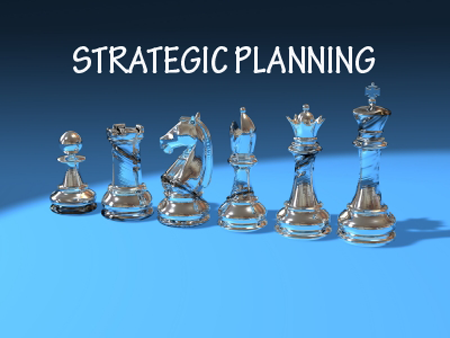An important part of any organization is the human resource department and one way to ensure that your HR departmentis doing well enough is to put in place strategic HR management.
Strategic human resource management refers to the use of different systems and strategies to achieve the aims, objectives, and mission of your organization in order to be successful as a firm while also ensuring that the needs of the stakeholders and employees are met. Strategic HR management is aimed at improving business performance, developing an organizational culture that is fit for a purpose, and advancing competitiveness, innovation, and flexibility.
The effectiveness of strategic HR management is hinged on HR playing a vital role in the creation and implementation of the company’s policies. It is demonstrated throughout the company’s activities such including rewarding staff, hiring and training them.
Strategic HR management looks into the different ways HR can impact the growth of the company. The onus is on the HR manager to adopt or develop an approach to train and retain employees so that they can achieve the long term goals of the company.
Importance of Strategic HR Management
A successful company is one in which all the different individuals and teams work independently and collectively to achieve the goals and objectives of the company. Strategic HR analyses the output of the employees and decides the line of action to take to encourage hardworking employees and address the weaknesses in the employees. Strategic HR is aimed at improving the value of individuals to the company.
Some of the benefits of strategic HR management include:
- Creation of better work culture.
- Increased job satisfaction.
- Increase in productivity.
- Efficiency in managing resources.
- An increase in customer satisfaction.
- Proactiveness in employee management.
Strategic HR Planning
One important aspect of strategic HR management is strategic HR planning. This is a direct link between HR management and the organization’s strategic plan for success. There is usually a strategic plan for most medium to large organizations that they follow to achieve their mission. However, strategic HR management is not restricted to medium to large-sized companies alone. Small-sized businesses can also adopt strategic HR planning even if they do not have more than 10 employees. It can help to guide their decision-making processes and help them grow.
When it comes to making financial and budgetary decisions, strategic HR planning is also very important as it allows the company factor in recruitment and training costs.
There are 4 major processes involved in strategic HR planning. They are:
- Assess the current capacity of your HR.
- Forecast the requirements for your HR.
- Carry out a gap analysis.
- Develop HR strategies to help your organization’s strategies.
Assessing the current capacity of your HR
Assessing the current capacity of your HR is the first step in your strategic HR planning process. You have to identify the level of skill, ability, and knowledge that your current staff possesses and the best way to do this is to develop an individual skill inventory for all your employees.
This skill inventory should not be restricted to the skill that each individual need for the positions they occupy. You should make a list of the skills that each of your employees has demonstrated over time. You should take into consideration special skills and recreational activities that may be useful to your organization.
You should review the assessment form for your employee’s performance to determine the development plans of the employees and their readiness to accept new responsibilities.
Forecasting the requirements for your HR
The next thing to do is to forecast the needs of your HR in line with the strategic goals that the company has set for the future. Forecasting, in this case, will require you to be realistic about your estimations in demand and supply. There are certain things to consider that involve key parts of your organization such as; the required skill set that is needed, the number of staff required to reach the company’s goals, and the jobs post to be filled.
Forecasting your HR demands involves assessment of challenges you will face in meeting up with the needs of your staff in relation to your external environment. One thing to note is the influence of the external environment on the needs of your HR department.
Carrying Out the Gap Analysis
Carrying out the gap analysis involves determining the gap between the current position of your company and where the organization plans to be a few years from now. Your gap analysis will include comparisons between the number of staff you have now and the projected number, the abilities and skill you have within the company and the ones you need for the future.
You should also look into the HR management practices of your organization to identify which ones need to be improved and the new practices that you need to imbibe to support the growth and expansion of the organization. The questions that you need to ask include:
- What are the new jobs that we need to create?
- What skills are required?
- Do we have the required skillset in our present employees?
- Are our employees empowered to maximize their strengths?
- Do we need more supervisors/managers?
- Are our future needs going to be met by our strategic HR management practices?
Developing HR strategies to support your organization’s strategies.
If you are going to meet up with the future needs of your organization, there are strategies that you need to develop. The strategies include:
- Outsourcing strategies
- Recruitment strategies
- Training and development strategies
- Restructuring strategies
- Collaboration strategies
All of these strategies are very crucial to the growth and success of your organization and to ensure that you are able to meet up with the future needs of your organization.
Conclusion
Strategic management and planning is the backbone for any future development in your organization. It is the foundation upon which the future growth of your organization is hinged upon. It is almost impossible to imagine the future of an organization that does not put proper plans in place for the future and is not strategic with its decision-making process to secure the future of their organization. The importance of strategic HR management and planning to any company cannot be overstated and as an HR manager or personnel, you are tasked with mapping out the route for your organization to go from where it is to where it wants to be. There is no better way for you by this.
Latest posts by Susan Saurel (see all)
- Strategic HR Management And Planning - March 29, 2023













